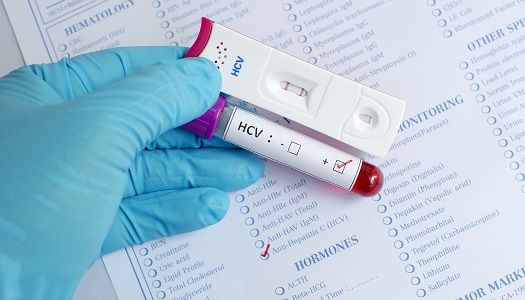Article
Study Finds New Approach to Estimating HCV Burden in At-Risk Populations
Author(s):
Use of this new approach suggests that HCV infection burden in New York City has been underestimated in populations considered high-risk for HCV, and that HCV transmission has increased among young adults in the city.

It's often difficult for healthcare researchers and epidemiologists to obtain accurate data on disease prevalence, particularly among underserved, and hard-to-reach populations.
A study published in Epidemics has outlined the use of a new approach to estimating disease prevalence of hepatitis C virus (HCV) in New York City (NYC), which takes into account the limitations of existing methods. The new Bayesian evidence synthesis model, according to researchers, accounts for bias in data sources.
Use of this new approach suggests that HCV infection burden in NYC has been underestimated in populations considered high-risk for HCV, and that HCV transmission has increased among young adults in NYC.
Lead author of the study and PhD candidate Sarah Tan, of Cornell University's Department of Statistical Science, noted that estimating the prevalence of chronic hepatitis C (HCV) in the general population presents “numerous challenges" due to the asymptomatic nature of the disease, and the sub-demographics of those populations at greatest risk for HCV infection including current injection drug users (IDUs), the incarcerated, and the homeless."
Alternative sampling strategies in use to capture data on HCV burden in correctional facilities, and among IDUs, those approaches invite additional challenge, as some subpopulation sizes are “not easily measured, and estimates, when available, are subject to considerable uncertainty.”
Other approaches to estimating HCV prevalence use nationwide data, but fail to capture the inherent spatial-temporal aspects of disease transmission which underserves populations in large cities where estimates for HCV prevalence is greater, Tan noted.
The approach designed by Tan and colleagues uses a Bayesian evidence synthesis model (BESM) to improve estimates of HCV prevalence. Tan wrote that their model utilized 10 sources of data on IDU and HCV. Among the data sources, investigators gathered from the US Census Bureau, the New York Metropolitan Statistical Area (NYMSA), the National Survey of Substance Abuse Treatment Services, and Health and Nutrition Examination Survey (HANES) household surveys.
The BESM, according to the investigators, "falls under the broader category of static, non-mechanistic models of infectious diseases" which works in contrast to traditionally employed models by culling data from multiple sources of partial information. Applying BESM to different data sources covering a range of NYC subpopulations, recognizing the biases inherent in those data sources, and adjusting for that bias creates a clearer picture of HCV burden as a whole.
Tan wrote that drug use history variables can help relate "data-scarce quantities to data-rich quantities" to estimate factors like proportion of current IDUs to ex-IDUs, which can affect accuracy of estimations.
The new approach stratifies the NYC population first into 3 IDU risk groups (current, ex, non-IDU), and then further stratifies those groups into 4 age level groups (20-29, 30-39, 40-49, 50-59 years of age). Tan writes that the two-level stratification creates 12 groups in total with varying levels of risk, since "both injection drug use and HCV prevalence vary by age."
HCV relevance, Tan wrote, can be estimated as a weighted average of 2 factor: HCV prevalence among age and type of IDU, and the proportion of type of IDU by age, weighted by the population size of those age groups in NYC.
The BESM-based estimates showed that "an estimated 0.29% (13,000 individuals) of the NYC population aged 20-59 are currently injection drug users and are HCV positive." Tan wrote that these individuals make up 50.2% (95% CI; 47.9%-53.4%) of the 27,600 current IDUs in NYC and that the group most affected by HCV burden is ex-IDUs aged 50-59, with 29,100 individuals.
The BESM-based model revealed that the HCV prevalence in NYC is currently underestimated by existing models, particularly in current- and ex-IDU populations. The BESM-based estimates also suggest that HCV transmission has increased in specific populations, primarily among young IDUs in NYC.
Tan and colleagues wrote that local prevalence estimates of HCV are “increasingly important" in order to better allocate funding for treatments, interventions, educational programs, and services. Researchers warn that underestimates of HCV burden could affect treatment of individuals and even lead to increases in HCV.
The study, "A Bayesian evidence synthesis approach to estimate disease prevalence in hard-to-reach populations: hepatitis C in New York City" was published online in Epidemics.





